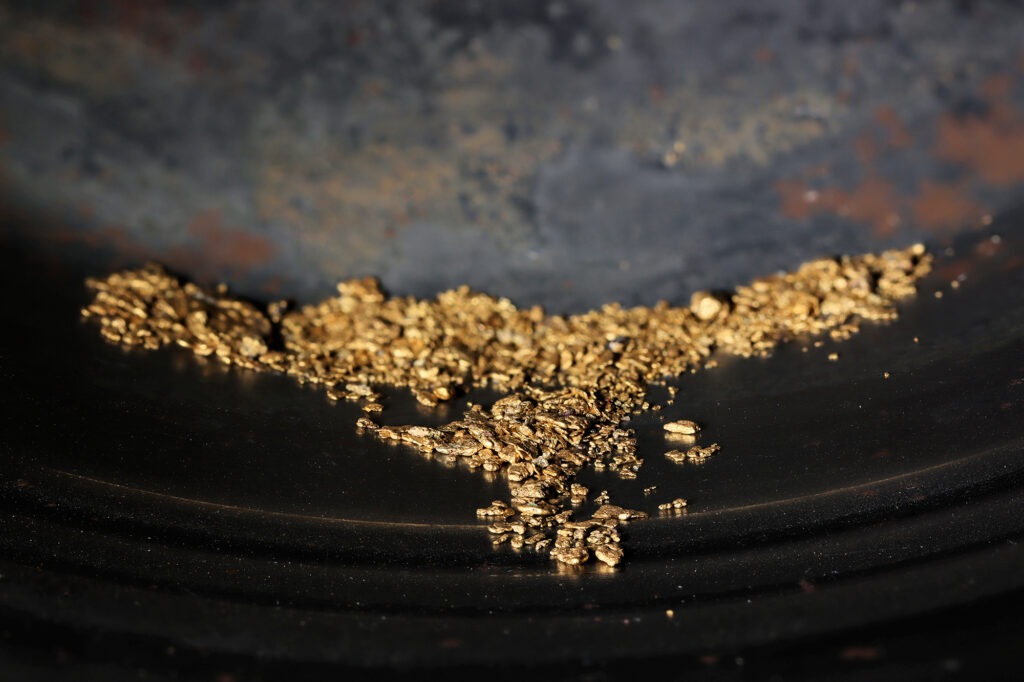Prospecting

Prospecting
Prospecting is the physical search for minerals, fossils, precious metals or mineral specimens, and is also known as fossicking.
Prospecting is synonymous in some ways with mineral exploration which is an organised, large scale and at least semi-scientific effort undertaken by mineral resource companies to find commercially viable ore deposits. To actually be considered a prospector you must become registered as a professional prospector. This process is easy but necessary if you wish to work in mineral exploration.
Prospecting is quite intensive physical labor, involving a considerable amount of traversing (traditionally on foot or on horseback), panning, sifting and outcrop investigation, looking for tell-tale signs of mineralisation. A prospector must also make claims, meaning they must erect posts with the appropriate plackards on all four corners of a desired land they wish to prospect and register this claim before they may take samples.
HISTORICAL METHODS
The traditional methods of prospecting involved carefully and intensely combing through the countryside, often through creek beds and along ridgelines and hilltops, often on hands and knees looking for signs of mineralization in the outcrop. In the case of gold, all streams in an area would be panned at the appropriate trap sites looking for a show of ‘colour’ or gold in the tail.
Once a small occurrence or show was found, it was then necessary to intensively work the area with pick and shovel, and often via the addition of some simple machinery such as a sluice box, races and winnows, to work the loose soil and rock looking for the appropriate materials (in this case, gold). For most base metal shows, the rock would have been mined by hand and crushed on site, the ore separated from the gangue by hand.
Often, these shows were short-lived, exhausted abandoned quite soon, requiring the prospector to move onwards to the next and hopefully bigger and better show. Occasionally, though, the prospector would strike it rich and be joined by other prospectors and larger-scale mining would take place. Although these are referred to as “old prospecting methods”, these techniques are still used very frequently today but usually in coupling with other more advanced techniques such as magnetic surveying and gravimetric analysis.
In most countries in the 19th and early 20th century, it was very unlikely that a prospector would retire rich even if he was the one who found the greatest of lodes. For instance Patrick (Paddy) Hannan, who discovered the Golden Mile, Kalgoorlie, died without receiving anywhere near a fraction of the value of the gold contained in the lodes, the same story repeated at Bendigo, Ballarat, Klondike and California.
GOLD RUSH
In the United States and Canada prospectors were lured by the promise of gold, silver, and other precious metals. They travelled across the mountains of the American West, carrying picks, shovels, gold pans, and whatever else they would need. Other prospectors searched canyons and mountain peaks, hardly leaving a rock unturned while looking for wealth. The majority of early prospectors had no training and relied mainly on luck to discover deposits.
Other gold rushes occurred in Papua New Guinea, Australia at least four times, and in South Africa and South America. In all cases, the gold rush was sparked by idle prospecting for gold and minerals which, when the prospector was rarely but spectacularly successful, generated ‘gold fever’ and saw a wave of prospectors comb the countryside.
MODERN PROSPECTING
Modern prospectors today rely on training, the study of geology, and prospecting technology. Knowledge of previous prospecting in an area helps in determining location of new prospective areas. Prospecting includes geological mapping, rock assay analysis, and sometimes the intuition of the prospector.
METAL DETECTING
Metal detectors are invaluable for gold prospectors, as they are quite effective at detecting gold nuggets within the soil down to, depending on the acuity of the operator’s hearing and skill, perhaps 3 feet. Magnetic separators may be useful in separating the magnetic fraction of a heavy mineral sand from the nonmagnetic fraction, which may assist in the panning or sieving of gold from the soil or stream.
